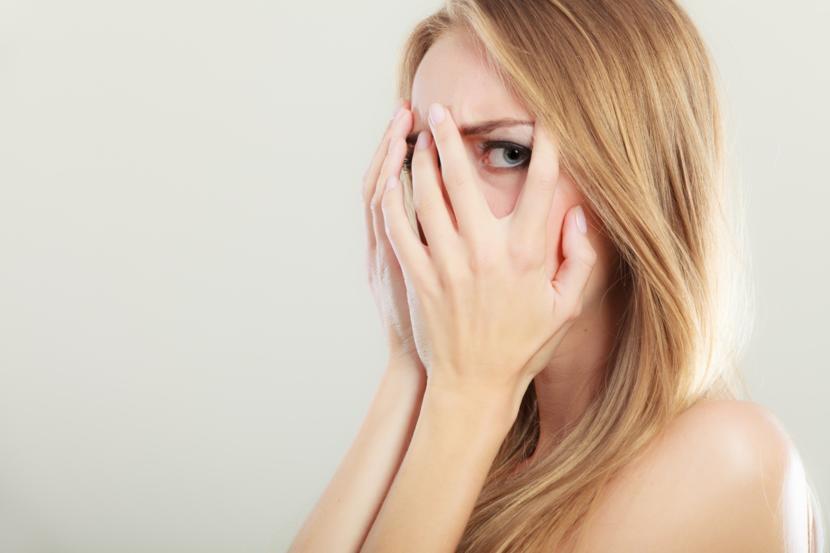Do You Have Trypophobia?

What is trypophobia?
Trypophobia is the fear or feeling of disgust of closely packed holes. Individuals who have trypophobia tend to feel very unsettled the moment they look at surfaces that have small clustered holes. Few of the examples would be the head of the lotus seed pod or the body of a strawberry, which also has a hole-like structure on it. Certain individuals would start to feel uneasy when they come across these things.
However, trypophobia is still not officially recognized as a type of phobia since there are limited studies being carried out about it. Researchers are also undecided whether this type of phobia should be an official condition. There have been a growing number of incidences of people fearing clustered holes. In certain cases, an individual starts to panic upon seeing photos of closely packed holes. Trypophobia is regarded as a weird issue associated with the fear of shapes created by nature.
In one study published in 2013, it suggested that trypophobia may be linked with the biological fear of harmful items or things. Researchers had studied that there were symptoms triggered by high contrast colors, which were formed in a graphic arrangement. They tend to argue that individuals who are affected by trypophobia were in the process of trying to subconsciously associate harmless things such as lotus seed pods with dangerous animals like blue-ringed octopuses.
However, another study published in April 2017 tried to dispute such findings. There were also surveys conducted on preschoolers to confirm whether this type of fear is based on a certain kind of fear towards dangerous animals or a response to specific visual traits. The survey results suggested that individuals who experienced trypophobia do not have any unconscious fear towards dangerous creatures. According to the results, fear was triggered by the mere appearance of certain creatures. Trypophobia is still unofficially recognized because there is still a need for a detailed study to understand the complete scope of the fear along with its causes.
What can trigger trypophobia?
Although a detailed information about trypophobia is still not widely available, there are certain things that are considered as trigger points according to people who suffer from this type of phobia. Trigger points include:
- Bubbles
- Lotus seed pods
- Honeycomb
- Clustered eyes
- Pomegranates
- Corals
- Cantaloupe
- Aluminum metal foam
- Strawberries
- Condensation
Aside from the above-mentioned triggers, animals, which include mammals, insects, or creatures that have spotted skin or fur can also become triggers for people with trypophobia.
Causes
There are certain people who think that their fear towards holes is mostly innate, whereas research studies tend to link trypophobia with nature and DNA. The brain is said to associate the shapes with wounds, disease, or danger. Another theory suggests that trypophobia is due to priming and conditioning. Other theories regarding trypophobia include:
- Evolution - The fear towards clustered holes can be due to evolution. When people are exposed to pockmarked objects, the brain perceives it as something bad or dangerous.
- Deep-Rooted Emotional Problem - There can be objects or experiences from childhood that may trigger certain kinds of fear in people such as bee stings. It is possible that the individual must have experienced bee stings, which led to an excessive swelling of the skin and enlarged skin pores.
- Organic Objects - The fear towards clustered holes can also be associated with certain organic objects such as skin blisters or rashes after having chickenpox or measles.
Symptoms
The symptoms are said to be triggered when an individual comes across an object that resembles small clusters of holes or shapes with closely packed holes. The symptoms of trypophobia include:
- Skin crawling sensations
- Goosebumps
- Restlessness or discomfort
- Anxiety and panic attacks
- Nausea
- Shivering or shaking
- Visual discomforts such as distortions, eye strain, or illusions
- Repulsion
- Excessive sweating
The reactions from individuals suffering from trypophobia are quite intense. The phobia can also trigger panic attacks in some individuals since they have a notion that something is living inside those holes or they may fall inside the holes. The moment they see triggers, their fear creates a feeling as if there is something crawling under their skin. Many people find clustered holes gross and disgusting just by looking at them.
Risk Factors
Detailed information about the risk factors associated with trypophobia is still not proven. In one of the studies conducted in 2017, a possible link between trypophobia and generalized anxiety and major depressive disorder was found. According to the studies conducted, individuals with trypophobia are more likely to experience either generalized anxiety or major depressive disorder. In a prior study published in the year 2016, a link was also noted between trypophobia and social anxiety.
Diagnosis
To diagnose a phobia, the doctor would initially ask a series of questions regarding your symptoms. The doctor would also ask about your medical, social, and psychiatric history. However, such type of phobia is not a diagnosable condition since it is not yet officially recognized by medical associations.
However, there are tests used to find out if you have trypophobia. One test is known as the trypophobia test pictures. In this test, if the image triggers any kind of response in patients who have been experiencing fear, then it is basically a certain kind of affirmation that the individual has trypophobia. There are various ways to perform a trypophobia test and few of them would include:
- Lotus Seed Pod Phobia Test: In this particular test, the person with trypophobia would need to be exposed to lotus seed pods or lotus pods. You can affirm trypophobia if the person shows disgust or resistance to seeing clusters of holes.
- Trypophobia Test Picture: This particular picture test would include showing pictures of lotus flower seeds or edited images that show holes on the skin. Images of corals or beehives can also be used in the test. It can be anything that would present clusters of holes.
Treatment
A phobia can be treated in a number of ways. The most effective form of treatment is exposure therapy, which is a type of psychotherapy that focuses on changing an individual’s response to certain situations or objects that can lead to fear. Another common treatment for phobia is cognitive behavioral therapy (CBT).
Cognitive behavioral therapy is a combination of exposure therapy along with other techniques to help in managing anxiety and also keeps the thoughts from becoming overpowering. Below are few of the other treatment options that can help in managing phobias:
- Relaxation Techniques - Yoga or meditation.
- Talk Sessions - General talk sessions with a psychiatrist or counselor to better understand your fears.
- Medications - Include sedatives or beta blockers that can help ease anxiety and panic attacks.
- Physical Activities - Carrying out physical activities and exercises to help manage anxiety attacks.
- Mindful Strategies - Include mindful breathing strategies that promote focus and calmness.
The use of medications has been tested when it comes to other kinds of anxiety disorders or mental health issues, but there is still limited information about their efficiency in terms of treating trypophobia. It also becomes important for individuals to get enough sleep and avoid caffeinated beverages or any substances that can make their anxiety worse. In case of fearful situations, learn to face them head-on as often as possible to prevent developing any type of phobia.
Since trypophobia has something to do with how the brain perceives any particular object, its cure, treatment, and management would mainly focus on the following therapeutic methods:
- Cognitive Therapy: The main goal of cognitive therapy is to change the destructive perception of the patient to improve the symptoms.
- Exposure Therapy: It is one of the commonly used therapy for managing and treating trypophobia. In this particular treatment method, the individual would need to be exposed to objects, which they fear again and again. By continuous exposure, their fear would significantly reduce.
- Combination Therapy: This particular therapy would include a combination of behavioral and cognitive therapy. With this approach, the patient would need to be able to learn various ways to cope with their fear and to normally live a happy life even if they will encounter triggers in the future.
From the psychological point of view, a phobia is an anxiety disorder, which has been thought to arise due to a known danger. Thus, people who suffer from trypophobia should know that there is no exact threat to them and should use therapies to overcome their fears.













